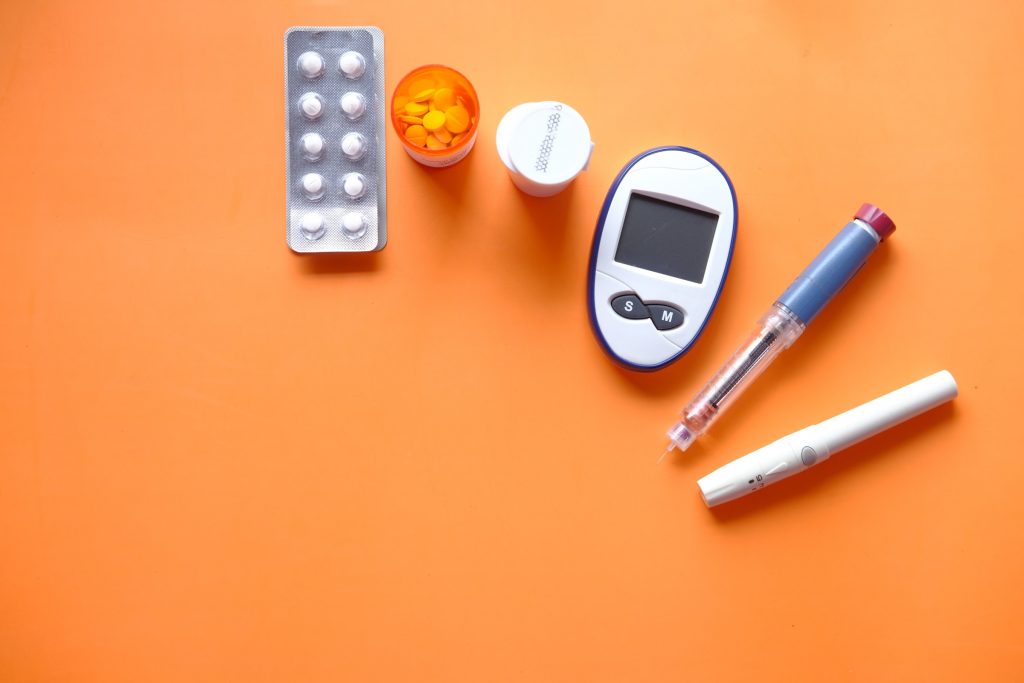The warning signs of Diabetes: what you need to know
Diabetes is a chronic disease that affects millions of people worldwide. It can lead to serious health complications if left untreated.
But the good news is that Diabetes can be managed, and even prevented, with the right care and lifestyle changes. That’s why it’s important to know the warning signs of diabetes so you can take action early and avoid complications down the line.
In this blog post, we’ll cover everything you need to know about Diabetes warning signs, including what Diabetes is, the different types of Diabetes, the risk factors, and the symptoms to look out for.

What is Diabetes?
Diabetes is a chronic disease that affects the way the body processes glucose.
Glucose is a type of sugar that comes from the food we eat and provides us with energy. When we eat, our pancreas produces a hormone called insulin, which helps glucose move from the bloodstream into our cells.
But in people with diabetes, the body either doesn’t produce enough insulin or can’t use insulin effectively. As a result, glucose builds up in the bloodstream and can’t be used for energy.
Types of Diabetes
There are three main types of diabetes: Type 1, Type 2, and Gestational Diabetes.
Type 1
Type 1 Diabetes is usually diagnosed in children and young adults and occurs when the body’s immune system mistakenly attacks and destroys the cells in the pancreas that produce insulin.
Sometimes known as Juvenile Diabetes, Type 1 Diabetes is an autoimmune disease where the body’s immune system mistakenly attacks and destroys the cells in the pancreas that produce insulin. This type of Diabetes most commonly occurs in children and young adults. Without insulin, glucose cannot get into the cells to be used for energy, leading to high levels of glucose in the blood.
In people with Type 1 Diabetes, high glucose levels in the blood can manifest in a variety of symptoms. Common symptoms include frequent urination, excessive thirst, extreme fatigue, blurred vision, slow-healing sores or cuts, tingling or numbness in the hands or feet, and unexplained weight loss. High glucose levels in the blood can also lead to serious complications, such as nerve damage or kidney damage.
Type 2
Type 2 Diabetes is the most common form of Diabetes and usually develops in adults over the age of 45. It occurs when the body becomes resistant to insulin or doesn’t produce enough insulin.
Type 2 Diabetes is characterized by a number of symptoms, including excessive thirst, frequent urination, sudden weight loss, fatigue, blurry vision, slow-healing sores or cuts, tingling or numbness in the hands or feet, and recurring infections such as yeast infections.
Gestational Diabetes
Gestational Diabetes occurs during pregnancy and usually resolves after delivery, but increases the risk of developing Type 2 Diabetes later in life. Symptoms can include excessive thirst, frequent urination, fatigue, blurred vision, and slow-healing sores or cuts.
Risk factors
There are several risk factors for developing Diabetes, some of which are controllable and some of which are not.
Some of the main controllable risk factors include:
- Being overweight
- Having an unhealthy diet
- Lack of physical activity
- Smoking
Other factors that increase the risk of developing Diabetes include:
- A family history of Diabetes
- Age
- Race and ethnicity
- Certain health conditions like high blood pressure and high cholesterol
Final thoughts
Knowing the warning signs of Diabetes is essential for maintaining good health and preventing complications down the line.
Better2Know’s Comprehensive Diabetes Test is a quick and easy way to test for Diabetes in the comfort of your own home. Take control of your health and protect yourself against Diabetes today.
Categories
- Awards
- Bacterial Vaginosis
- Blood Tests
- Cervical Cancer
- Chlamydia
- Condoms
- Covid-19
- Gardnerella
- Genital Warts
- Gonorrhoea
- Health and Wellness
- Hepatitis A
- Hepatitis B
- Hepatitis C
- Herpes
- HIV
- HIV (AIDS)
- Home Testing
- HPV
- Instant Testing
- MSM
- Mycoplasma
- News
- Non-Specific Urethritis
- PAP Smear
- Pre-Pregnancy
- Sexual Health
- STD Symptoms
- STD Tests and Screens
- STI Transmission
- Stigma
- STIs
- Swab Tests
- Syphilis
- Trichomonas
- Ureaplasma
- WSW
- Zika
